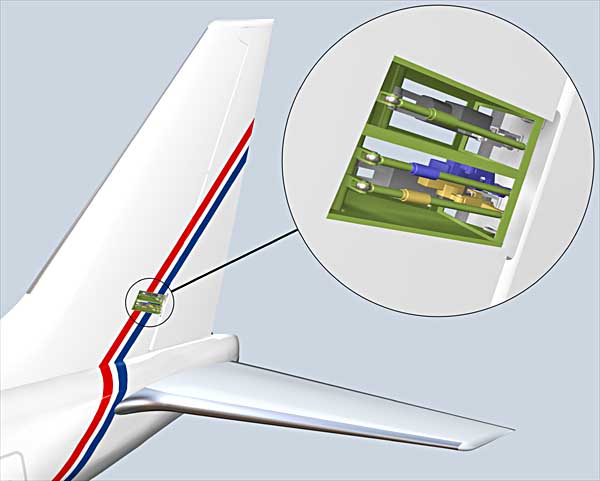

| FAA to Propose Rudder Redesign and Other Safety Initiatives for Boeing 737, Boeing Announced Enhancements To Its Popular 737 Twinjet |
 |
|
| September 14, 2000, Washington—The Federal Aviation Administration (FAA) today announced that it will propose a long-term redesign of the Boeing 737 rudder system and undertake several short-term initiatives designed to enhance rudder safety on all Boeing 737 models after the crash of a USAir Boeing 737 Crashes Killing All Onboard. |
 |
“Today’s Boeing 737 rudder system complies fully with all current regulations, but we think it can be improved and made more reliable,” said FAA Administrator Jane F. Garvey. “The changes we are going to propose will make an aircraft with an excellent safety record even safer.” Within a year, the FAA will propose mandating a redesign of the Boeing 737 rudder system. The redesign would increase the overall safety of the 737 by simplifying the rudder system and eliminating a range of both previously known and recently discovered failure possibilities. The redesign also will make it unnecessary to have rudder procedures and training requirements that are unique to the 737. By the end of this October, the FAA will simplify the procedure for handling a jammed or restricted rudder and begin training Boeing 737 pilots on the new methods. In the same time frame, the agency will begin an effort to identify and mandate critical maintenance changes that will reduce the possibility of undetected failures. |
|
|
The FAA’s actions follow a year-long, top-to-bottom analysis of the Boeing 737 rudder system by the 737 Flight Control Engineering Test and Evaluation Board (ETEB). The ETEB, which the agency established in May 1999, consisted of 22 experts from government and industry. To ensure objectivity, team members selected for the ETEB had no previous association with 737 rudder design. The ETEB studied possible ways the 737 rudder system could malfunction, however remote such failures might be. The team then confirmed their analysis through component tests, integrated systems evaluations and flight tests with an actual Boeing 737 on loan from Purdue University. The FAA previously ordered several other design changes that have increased the safety level of the 737 rudder system. All U.S. registered 737s now have improved rudder power control units, a more reliable yaw damper mechanism and a hydraulic pressure reducer that helps pilots maintain control if the rudder makes unintended movements. Boeing announced that elements of the rudder system on all 737s will be enhanced. The modification retains key features of the current, highly reliable system while adding elements designed to improve redundancy - an aerospace design principle in which duplicate systems are used to prevent overall failure if one part is damaged. Primary changes affect the Power Control Unit (PCU) located in the airplane's tail; this mechanism controls the rudder's movement. The current PCU with one dual concentric valve will be replaced by a system with two independent valves, shown here in blue and yellow, with two independent "input" arms. Also, hydraulic pressure sensors in the new system will monitor both halves of the actuator; if abnormal pressures are sensed, the standby rudder system will activate automatically. The FAA anticipates that it could mandate any needed changes to 737 rudder maintenance by early next year. Redesign and retrofitting of a modified rudder system would take several years, because Boeing will have to thoroughly test the new design and make sure its installation will not have unintended negative safety consequences. |
 |
|
|
Old |
||
 |
||
|
New |
||
| ŠAvStop Online Magazine Contact Us Return To News | ||